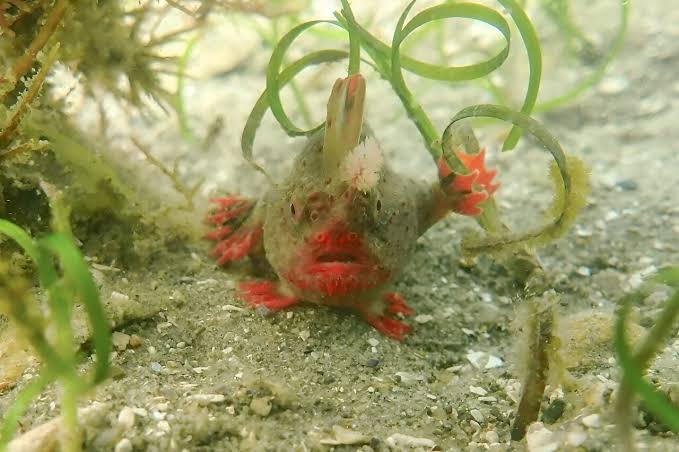Australia scientists pluck rare handfish from ocean due to climate risk

In a bold move aimed at preserving the dwindling population of the iconic red handfish, Australian scientists from the University of Tasmania’s Institute for Marine and Antarctic Studies undertook a perilous expedition to collect 25 of these rare creatures from the ocean.
The red handfish, resembling a crimson and brown goldfish with unique features such as stubby arms and webbed hands, faces imminent peril due to the adverse impacts of climate change, human-induced alterations to their habitat, and the voracious activity of sea urchins.
Living exclusively in a confined reef area off southeast Tasmania, the red handfish population has diminished to a mere 100 individuals in the wild. Measuring around eight centimeters (three inches) in length, these enigmatic creatures exhibit an unusual mode of movement, “walking” along the sea floor using their pectoral and pelvic fins rather than swimming.
The University of Tasmania’s Institute for Marine and Antarctic Studies highlighted the severe threats faced by the red handfish, including habitat loss and degradation due to overgrazing urchins, urban runoff, boat disturbances, and escalating sea temperatures. With rising global temperatures reaching unprecedented levels this summer, marine scientist Jemina Stuart-Smith expressed concerns about the additional stressors impacting this already fragile population.
In response to the escalating crisis, the institute made the difficult decision to extract 25 red handfish from their natural habitat for temporary safekeeping. The specimens are now housed in carefully monitored aquariums, with experienced staff ensuring their well-being around the clock. Andrew Trotter, a representative of the institute, emphasized the heightened responsibility felt by the team, given the small size of the wild population.
As scientists closely observe the collected red handfish for signs of stress or ill health, plans are in place to return them to their natural habitat during the austral winter in June, hoping for more favorable conditions. The urgency of this mission underscores the broader issue of rising sea temperatures off Australia, attributed to the continuous emission of carbon dioxide and other greenhouse gases into the atmosphere, threatening the delicate balance of marine ecosystems.
